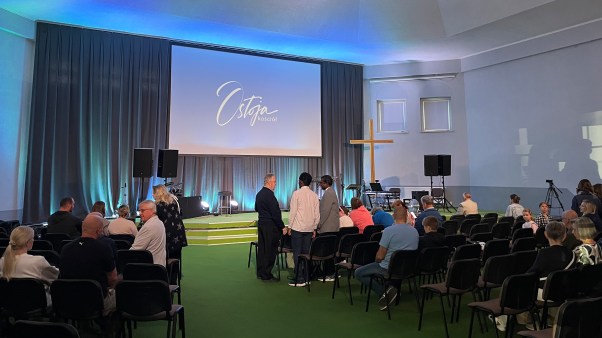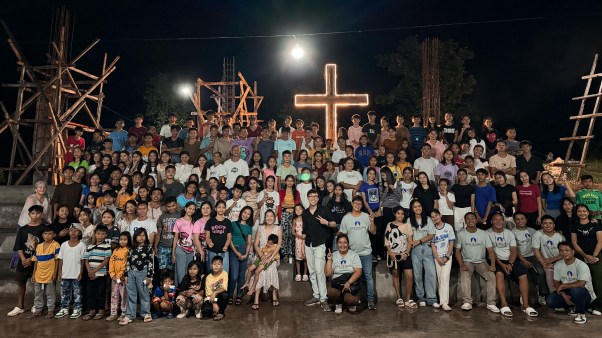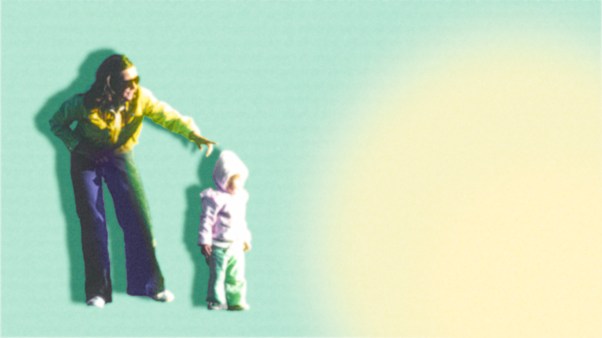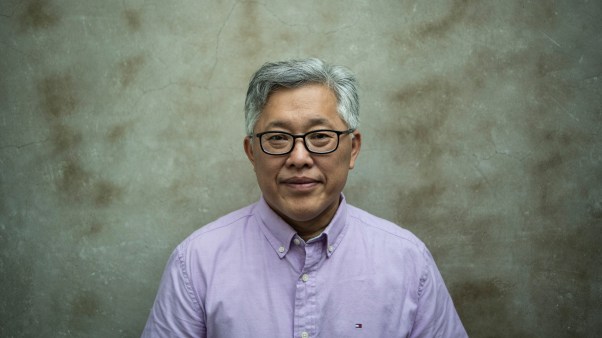THOMAS BECKNELL1Thomas Becknell is assistant professor of English at Bethel College, St. Paul, Minnesota. He holds the Ph.D. in American Literature from the University of Iowa.
“Christ is calling everyone here, all my companions have answered …, and I am standing alone in rebellion and growing very careless.”
Emily Dickinson wrote those words as a resolute teenager in the midst of a great revival in the midnineteenth century. One by one, her father, her family, and her friends publicly answered the call of Christ. Yet Emily resisted as revival after revival swept over Amherst, Massachusetts.
It was not from indifference that she held out so deliberately. Barely 15, she confided to her friend Abiah Root, “There is an aching void in my heart which I am convinced the world never can fill. I am far from being thoughtless upon the subject of religion. I continually hear Christ saying to me Daughter give me thine heart.… I hope the golden opportunity is not far hence when my heart will willingly yield itself to Christ.”
When Emily Dickinson died, 100 years ago, few knew the intensity of her lifelong struggle to yield her heart to Christ. Fewer still would have guessed that this demure and reclusive woman—who in her later years took to wearing only white—would come to be recognized as one of America’s most brilliant poets.
We usually celebrate the birth of famous people. With Emily Dickinson, however, it is more appropriate to celebrate the centennial of her death. It was, in a peculiar sort of way, a birth, for hundreds of startling unpublished poems were discovered tucked away in her bureau and in secret nooks.
Nothing like them had ever been seen; they seemed to be the raw stuff of poetry—“poetry plucked up by the roots,” as one editor put it, “with earth, stones and dew adhering.” The meters are rough, the rhymes askew, but the images and the words are penetrating and direct. “I like a look of Agony,” begins one poem, “Because I know it’s true.” Seldom pretty, her poems are frank and painfully stark.
Reflecting upon the death of Emily Dickinson leads us to consider the risks of Christian faith. Some of her most familiar poems are themselves contemplations on the imagined moment of her death: “I heard a fly buzz when I died,” and “Because I could not stop for death, he kindly stopped for me.” Many of these poems portray the process of dying, and the imagined pain of those left behind. Others call into question the assurances of Christian faith:
Dying! Dying in the night!
Won’t somebody bring the light
So I can see which way to go
Into the everlasting snow?
And “Jesus!” Where is Jesus gone?
They said that Jesus—always came—
Perhaps he doesn’t know the House—
This way, Jesus, Let him pass!
Death, in her words, was an “uncertain certainty”—that moment when life’s greatest certainty and uncertainty meet. Coming to terms with death is one way of coming to terms with Christ: “The Test of Love—is Death—/ Our Lord—‘so loved’—it saith—”
The sort of “Love” that impels belief did not come easily to Dickinson. Her “faith,” she said, “doubts as fervently as it believes.” Neither a theologian nor a philosopher, this poet understood “faith” and “doubt” imaginatively. Perhaps more of us ought to reflect as she did upon death as a focal point where belief and doubt vigorously converge.
Emily Dickinson was born within the long shadow of New England’s Puritan tradition, and she inherited its spirit of self-examination.
But New England, in the midnineteenth century, was a culture in transition. Emerson’s teaching of self-reliance was displacing the legacy of Jonathan Edwards. It was a time, poet and critic Allen Tate tells us, in which the bank was displacing the church as the ordering center of the community. But in Amherst, Edward Dickinson, the college treasurer and Emily’s father, still kept the Sabbath by going to church.
Through the influences of the church, Emily’s young imagination first developed. Vivid images from Scripture, impassioned sermons, and the sonorous hymns of Isaac Watts all gave shape and rhythm to her poems.
Sometime in her early twenties, Emily Dickinson stopped going to church, but her search for spiritual truth continued.
Some keep the Sabbath going to Church—
I keep it, staying at Home—
With a Bobolink for a Chorister—
And an Orchard, for a Dome—
God preaches, a noted Clergyman—
And the sermon is never long,
So instead of getting to Heaven, at last—
I’m going, all along.
The truth is, however, that Emily Dickinson seldom wrote about “getting to Heaven” with such buoyancy and optimism. The anticipation of future joys seemed merely to sharpen the anguish of this life.
Within a few years of attending Mount Holyoke—where again she resisted the call of Christ—Emily Dickinson withdrew altogether from the social world of Amherst. Stories of her eccentricities abound: of her gingerbread cakes let down from her window to children below, and of her eerie reception of guests from behind a screen. Speculations about her motives are just as abundant. But these biographical curiosities are less important than seeing that she lived life deliberately, devoting herself wholly to a life of the imagination. “To live is so startling,” she explained, “It leaves little room for other occupations.”
Precisely that attitude, informing both her life and her work, makes her seem much more a voice of the modern age than a poet of the romantic era. Dickinson’s question was not how to die—“the merest Greek could that.” Rather, her question was how to live in the face of certain death.
’Tis not that Dying hurts us so—
’Tis Living—hurts us more—
But Dying—is a different way—
A Kind behind the Door—
The Southern Custom—of the Bird—
That ere the Frosts are due—
Accepts a better Latitude—
We—are the Birds—that stay.
The Shiverers round Farmers’ doors—
For whose reluctant Crumb—
We stipulate—till pitying Snows
Persuade our Feathers Home.
Such images appeal to all who have found themselves shivering in their own internal winter. The cold, the freezing, the scalding drop of anguish—these intensify our consciousness of living. “A Wounded Deer—leaps highest,” she noted.
Yet Dickinson remained too much a Calvinist to be mere existentialist—hence the spiritual complexity of her poems. Her fascination with death reveals at once a concern for salvation beyond and a search for meaning in this present world. The questions of one incessantly gnawed at the claims of the other.
This World is not Conclusion.
A Species stands beyond—
Invisible, as Music—
But positive, as Sound—
It beckons, and it baffles—
Philosophy—don’t know—
And through a Riddle, at the last—
Sagacity, must go—
To guess it, puzzles scholars—
To gain it, Men have borne
Contempt of Generations
And Crucifixion, shown—
Faith slips—and laughs, and rallies—
Blushes, if any see—
Plucks at a twig of Evidence—
And asks a Vane, the way—
Much Gesture, from the Pulpit—
Strong Hallelujahs roll—
Narcotics cannot still the Tooth
That nibbles at the soul—
Thundering hallelujahs, and the nibbling tooth of doubt. This is the dynamic tension in her work. It is the risk of faith itself. It is the gnawing possibility that this world really is conclusion; that death leads not to eternity, but only to extinction; that God’s averted face may never be seen.
I know that He exists.
Somewhere—in Silence—
He has hid his rare life
From our gross eyes.
’Tis an instant’s play.
’Tis a fond Ambush—
Just to make Bliss Earn her own surprise!
But—should the play
Prove piercing earnest—
Should the glee—glaze—
In Death’s—stiff—stare—
Would not the fun
Look too expensive!
Would not the jest—
Have crawled too far!
Should God’s playful silence prove to be serious, it would indeed be a joke carried too far! Such are the hazards of affirming “I know that He exists.” To see how much is at stake, then, is to see the courage Dickinson projects through that affirmation.
Dickinson’s theological questions were blown to a white heat during the Civil War. For many American writers in the nineteenth century, the consequences of the Civil War were as devastating as the effects of the Holocaust have been upon the modern consciousness. Death on such a scale had not been imagined.
More than half of Dickinson’s poems were written during these four bloody, divisive years. Penetrating and haunting poems, most of them fumble for a sign of God’s presence behind the awful blankness of death: “I’ve seen a Dying Eye / Run round and round a Room—/ In search of Something—/ … And then—be soldered down / Without disclosing what it be / ’Twere blessed to have seen—”
These soldered-down eyes stare at us from poem after poem. Do we dare turn away our own gaze from those “nailed eyelids”?
Shortly before the Civil War, Emily Dickinson penned a poem especially helpful for understanding her vision. “Success is counted sweetest,” it suggests, “by those who ne’er succeed.” Then, illustrating the paradox:
Not one of all the purple Host
Who took the Flag today
Can tell the definition
So clear of Victory
As he defeated—dying—
On whose forbidden ear
The distant strains of triumph
Burst agonized and clear!
The one who best understands “victory” is the one experiencing “defeat.” It is the blind who most clearly know what it is to see; the lost, to be found; the doubter, to believe: “ ’Tis Beggars—Banquets can define—/’Tis Parching—vitalizes Wine—/ ‘Faith’ bleats—to understand!”
Certainty never came to Emily Dickinson. Throughout her later poems we find a pervasive tone of resignation.
But as with Peter before her, repeated denials invite the fierce gaze of Christ. Near the end of her life, she wrote: “To be willing the Kingdom of Heaven should invade our own requires years of sorrow.” Christ, the Man of Sorrows, the one acquainted with grief, persistently invaded her consciousness. His suffering, his cry of sabachthani, his death—justified hers. It was not she answering the call of Christ, but Christ answering her anguished cry. Her posture never would be one of “standing up” for the Savior, but merely a stooping, eyes bent to the earth:
Perhaps you think me stooping
I’m not ashamed of that
Christ—stooped until He touched the Grave—
We can begin to see why, in her later years, poetry itself seemed more and more like a sacrament: “Your thoughts don’t have words every day / They come a single time / Like signal esoteric sips / Of the communion Wine.”
These poems of Emily Dickinson, rare distillations of truth, clarify the necessity for faith, the bridge between certainty and uncertainty:
Faith—is the Pierless Bridge
Supporting what We see
Unto the Scene that We do not—
Too slender for the eye
It bears the Soul as bold
As it were rocked in Steel
With Arms of Steel at either side—
It joins—behind the Veil
To what, could We presume
The Bridge would cease to be
To Our far, vacillating Feet
A first Necessity.










